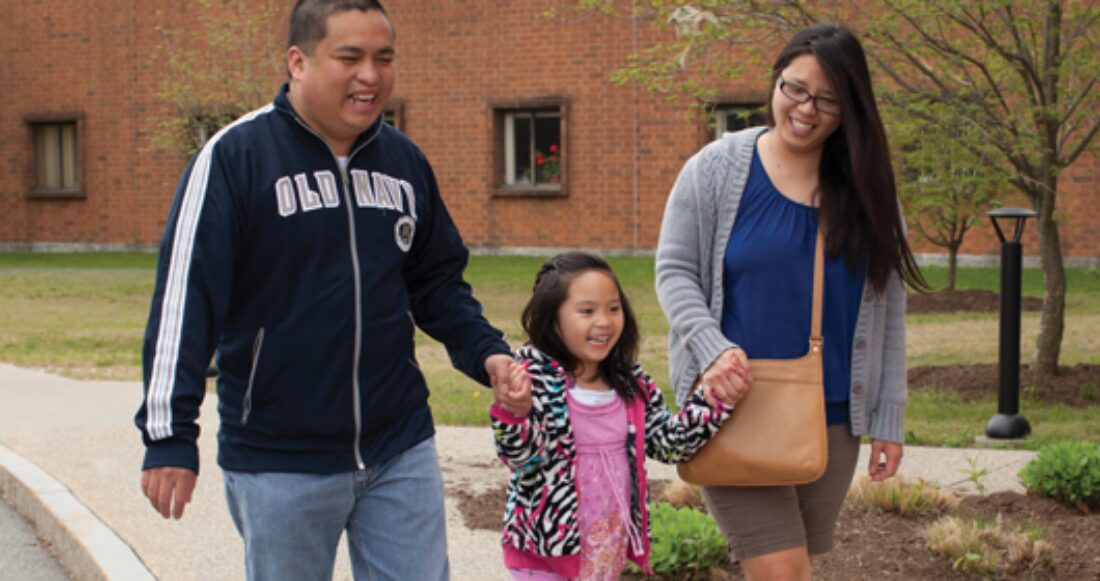Nearly Half of America’s Families With Young Children Struggle to Make Ends Meet

With almost half the nation’s young children growing up in low-income households, a new report from the Annie E. Casey Foundation calls for a comprehensive effort to lift kids out of poverty. The report focuses on the importance of delivering high-quality early childhood education while simultaneously providing parents with access to job training, career paths and other tools that enable them to support their families.
The KIDS COUNT® policy report, Creating Opportunity for Families: A Two-Generation Approach, outlines how the public, nonprofit and private sectors must work together to reduce poverty among the 10 million low-income families with young children in the United States. The recommendations propose integrating state and federal employment, education and child care programs for parents and children to create better opportunities for the entire family.
“We hope this report will spark deep commitment in Washington and in board rooms across the country to remove the obstacles that prevent millions of families from putting their kids on a path to success,” said Patrick McCarthy, president and CEO of the Casey Foundation. “For too long, our approach to poverty has focused separately on children and adults, instead of their interrelated needs. We’ve learned a lot about what works in separate areas, but we’re not combining these lessons to break the cycle of poverty.”
The Foundation’s two-generation approach seeks to equip families with the tools and skills to get on a path to opportunity and overcome some of the obstacles they face, such as inflexible and unpredictable jobs that do not offer high enough wages to support a family; lack of access to high-quality, reliable early child care and education; and increased stress levels for parents and children. The report describes specific strategies for addressing these challenges so that parents can fully nurture and support their children and, ultimately, build better futures for themselves and their kids.
The key findings show that nearly a third of children age 5 or younger in low-income families have parents with concerns about their development and that 45% of low-income families with young children (age 8 or younger) are headed by single parents, compared with 17% of middle- and upper-income families. In nearly 80% of low-income families with young children, parents do not have a postsecondary degree, which dramatically highlights the need to equip parents who have limited education with skills that can help them earn a family-supporting income. Additionally, the report emphasizes the need for federal and state agencies, along with businesses and community- and faith-based institutions, to work more closely together so that the whole family can succeed.
The report outlines three broad recommendations:
- Create policies that equip parents and children with the income, tools and skills they need to succeed — as a family and as individuals. State and federal governments should strengthen policies that expand job-training, educational and career opportunities; adopt policies that give parents more flexibility at work, such as paid time off; increase the Child Tax Credit for low-income parents of very young children; and expand the Earned Income Tax Credit to increase the income of noncustodial parents.
- Put common sense into common practice by structuring public systems to respond to the realities facing today’s families. State and federal governments should promote collaboration and align policies and programs through interagency commissions and innovation funds. For example, child- and adult-focused state agencies should consolidate their data to look at the whole family. Federal policymakers could take advantage of new legislation and reauthorization periods for Head Start and Temporary Assistance for Needy Families, among others, to bring together child and adult programs.
- Use existing child, adult and neighborhood programs and platforms to build evidence for practical pathways out of poverty for entire families. Early childhood, K‑12, home-visiting, job-training and supportive housing programs could partner with one another to connect parents with financial coaching, job-readiness assistance, education and other tools to achieve financial stability, while also ensuring their children have access to high-quality care and schooling.
Creating Opportunity for Families: A Two-Generation Approach is available at www.aecf.org. Additional information is available in the KIDS COUNT Data Center, which also contains the most recent national, state and local data on hundreds of indicators of child well-being. The Data Center allows users to create rankings, maps and graphs for use in publications and on websites, and to view real-time information on mobile devices.





